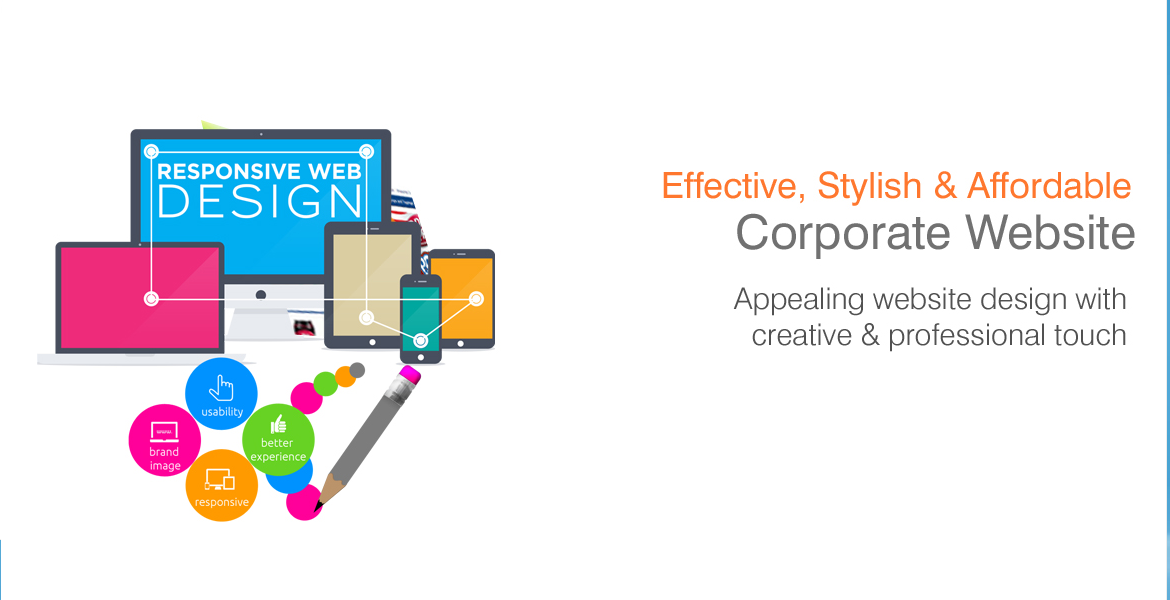What's a corporate web site?
A site that is utilized to authoritatively speak to a brand on the Internet, and which is frequently utilized as the presentation page for publicizing content. Past a negligible tribute nearness, a corporate site speaks to a business opportunity if the choice is to gave to make buys, and in a perfect world ought to likewise be enhanced as a methods for reaching clients or some other guests, whereby clients are furnished with data about items or benefits, and can discover significant substance, for example, curiosities or unique offers that advance dedication.
This sort of hardware requires extraordinary consideration: it is basic that all substance conform to the organization's standards and encourage its worldwide concentration by being completely incorporated inside the organization structure and its general system. In this day and age of Web 2.0, a corporate site may not be adequate: numerous organizations have expanded their online nearness by creating profiles on informal organizations and online networks.
6 Steps to Build Best Corporate Website
1. Define your target audience
One of the very first questions we at Vintage ask our clients is For whom do you want to create your website? And we are regularly shocked at the length of the reply a looong detailed list of diverse people. Naturally, our next question is Which of those many are the most important? Unfortunately, the answer is oftentimes that they are all equally important.
If your primary aim is to inform shareholders and partners about your financial achievements, your website should speak their language that will likely to be not pretty appreciated by your clients. In other words, the "Investments" page should be written in a more formal language to fulfill visitors expectations, but that doesn't mean that the content and its representation should be boring. If the main audience of your website is press and mass media, the content will differ. A team page will show that the company appreciates and rewards their hard work and useful initiatives. The staff will probably look for information about company's latest news and different employee benefits.
Thus, a content and design of your future corporate website will be based on the target audience's needs. So it is crucially important to understand who you want to visit your website and give them exactly what they look for.This exclusive web portal development is for clients who need enterprise applications, corporate database and systems along with enterprise working module. This enterprise solution helps organizational and business enterprises to put forward the desired communication to the public. Among the most convenient way to co-ordinate business issues with the relevant target audience is effectively communicating to the masses. This web portal development helps in showcasing and communicating with the global audience.
2. Understand the value of your website
Thanks to corporate websites, clients can save time and find a unique source for information about a company and its products and services. Investors benefit from finding all necessary information verifying that a company is worth investing in a company. Media attract readers by posting valuable and interesting news about your company they get from your website. Finally, you benefit from new purchases, investments, and media coverages.
The most successful brands became so because they caught on to the fact that their customers do not really care about the companies running their businesses. Those brands focusing on the needs of clients and strive to provide adds value to their lives are seeing customer loyalty and engagement improve.
Unfortunately, many brands, including the biggest ones, still provide no value to consumers. Instead, corporate websites mainly exist to represent the companies in web and had little to offer anyone beyond shareholders, investors, and PR. In could be said: it no longer works. Again, a corporate website is a tool which can offer maximum benefits for different target groups. It creates a transparent, intelligible dialogue with users, not a monolog.
3. Concepting
So you have established the purpose of your future corporate website, identified your audience, and set goals. Now, it is time to find a way to achieve them. Here a web agency comes into play. Hire a designer and go through this part with him/her. Read this article to understand how to find a like-minded web designer.
Defining goals and problems a website has to solve is part of the design-thinking method. To some degree, the new design thinking movement reflects a modern, industrial era. Uber Brand is an example of a good-looking and minimalistic corporate website. The story of how the company's founder and CEO, Travis Kalanick, and his design team came to a new brand image is about more than a corporate rebranding. It is about their attempt to change the company's goal and create a new reputation. It is about transformation not only how it is perceived throughout the world, but how it perceives itself.
Creative concept of your corporate website design should be based on your corporate strategy and goals. Obviously, right? Before starting, you already need to have a concept of what you are going to create. If there is no concept, no story behind a design, then it is not graphic design.
4. Wireframing and Prototyping
Then, come to wireframing. Wireframe is a low fidelity layout. There are 3 main goals of web design: to present the main information group, to outline of structure and layout, and to describe the user interface.
It is the first and the roughest picture of your website.Most professional designers draw a sketch manually before using any software. Furthermore, before drawing, they use a worded description. So they can see which elements should be added, replaced, changed, or excluded. This method helps systematize the information and could be applied to any kind of projects.
If everything looks good and every next step is less or more obvious, it is time to draw paper prototype. It is a more serious and mobile version which allows testing an interface on real users. You could see what will happen after a certain button is pressed and how the screen changes. The paper prototyping is simple, free, entertaining, and extremely efficient.
Use stickers to draw sketches of each screen, widget, and button. And do not forget about a mobile version of your future corporate website. To have a better understanding about the website prototyping, read this article.
5. Content
Now, when you have a vision of how your website will look like in details, you can come to content production. A content is as important as design it keeps users on your website. What you put on it depends on what your target user wants to finds.
If you build a corporate website primarily for shareholders and investors, it makes sense to compound an information in a clear, formal way. In their turn, PR and media will definitely look for basic facts about your company, financial reports, discover the company's own spin on events, and download images to use as illustrations.
Again, apply here a Job's method. Find out what the top priority for your customers is when they visit your website. If the answer seems to so clear, it makes sense to conduct a survey.
5. Designing
After you have submitted the blueprint and content, the next step is designing and developing. The design stage works towards a suitable look and feel of your website. Using the data you've gathered so far, you now need to decide how a website will look like. Transmit your vision and goals of your business website to your web designer and let him/her decide how to achieve this. Again, keep the audience in mind when planning on a visual part. First, designers usually create main page design and test it. Your business' visual branding elements should be included there.
A logo, branding fonts, and color scheme, if you already have so, will dictate the design of your website.This is the foundation of the next stage. Business website development governs all the code that makes the website tick. It can be split into two front-end and back-end. A front-end developer is responsible for a website's user-facing code and the architecture of its immersive user experience. A back-end developer takes finished front-end code and gives it working functionality. Once this part of work is done, it is time to put in content, get designer's expertise, test the website on variety devices, and, finally, launch it.






